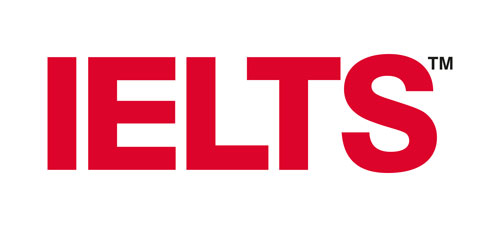IELTS – Sample Papers for Academic Writing. Academic Writing Sample Tasks and Sample Candidate Writing Scripts and Examiner Comments
IELTS – Sample Papers for Academic Writing.
Academic Writing
Duration: 60 minutes
The Academic Writing tests consist of two writing tasks of 150 words and 250 words.
In Task 1, test takers are asked to describe some visual information (graph/table/chart/diagram). They need to write 150 words in about 20 minutes. In Task 2 test takers are presented with a point of view or argument or problem. They need to write their response in 250 words in about 40 minutes.
Below are samples of Task 1 and Task 2.
Please note that test takers for IELTS Academic take a different Writing test in IELTS General Training.
Test format – Academic Writing
60 minutes
Topics are of general interest to, and suitable for, test takers entering undergraduate and postgraduate studies or seeking professional registration. There are two tasks:
- Task 1 – you will be presented with a graph, table, chart or diagram and asked to describe, summarise or explain the information in your own words. You may be asked to describe and explain data, describe the stages of a process, how something works or describe an object or event.
- Task 2 – you will be asked to write an essay in response to a point of view, argument or problem. Responses to both tasks must be in a formal style.
IELTS Academic Writing description
| Paper format | There are two Writing tasks and BOTH must be completed. |
| Timing | 60 minutes |
| No. of questions | 2 |
| Task types | In Task 1, test takers are asked to describe some visual information (graph/table/chart/diagram) in their own words. They need to write 150 words in about 20 minutes. In Task 2, they respond to a point of view or argument or problem. They need to write 250 words in about 40 minutes. |
| Answering | Answers must be given on the answer sheet and must be written in full. Notes or bullet points are not acceptable as answers. Test takers may write on the question paper but this cannot be taken from the examination room and will not be seen by the examiner. |
IELTS Academic Writing in detail
A detailed look at the paper with links to related resources.
Task 1
| Task type and format | In Writing Task 1, test takers may be asked to describe facts or figures presented in one or more graphs, charts or tables on a related topic; or they may be given a diagram of a machine, a device or a process and asked to explain how it works. They should write in an academic or semi-formal/neutral styles and include the most important and the most relevant points in the diagram. Some minor points or details may be left out.Test takers should spend no more than 20 minutes on this task. They are asked to write at least 150 words and will be penalised if their answer is too short. While test takers will not be penalised for writing more than 150 words, they should remember that a longer Task 1 answer may mean that they have less time to spend on Task 2, which contributes twice as much to the Writing band score. Test takers should also note that they will be penalised for irrelevance if the response is off-topic or is not written as full, connected text (e.g. using bullet points in any part of the response, or note form, etc.). They will be severely penalised for plagiarism (i.e. copying from another source). Test takers must write their answers on the answer booklet. |
| Task focus | This task assesses the ability to identify the most important and relevant information and trends in a graph, chart, table or diagram, and to give a well-organised overview of it using language accurately in an academic style. |
| No. of questions | 1 |
Task 2
| Task type and format | In Writing Task 2, test takers are given a topic to write about an academic or semi-formal/neutral style. Answers should be a discursive consideration of the relevant issues. Test takers should make sure that they read the task carefully and provide a full and relevant response. For example, if the topic is a particular aspect of computers, they should focus on this aspect in their response. They should not simply write about computers in general. Test takers should spend no more than 40 minutes on this task. They are asked to write at least 250 words and will be penalised if their answer is too short. While test takers will not be penalised for writing more than 250 words, if they write a very long answer they may not have time for checking and correcting at the end and some ideas may not be directly relevant to the question. Task 2 contributes twice as much to the final Writing band score as Task 1. Therefore, test takers who fail to attempt to answer this task will greatly reduce their chance of achieving a good band.Test takers will be penalised for irrelevance if the response is off-topic or is not written as full, connected text (e.g. using bullet points in any part of the response, or note form, etc.). They will be severely penalised for plagiarism (i.e. copying from another source). Finally, test takers should make sure that they do not copy directly from the question paper because this will not be assessed. They must write their answers on the answer booklet. |
| Task focus | This task assesses the ability to present a clear, relevant, well-organised argument, giving evidence or examples to support ideas and use language accurately. |
| No. of questions | 1 |
IELTS Academic Writing – How it’s marked
Marking and assessment
Each task is assessed independently. The assessment of Task 2 carries more weight in marking than Task 1.
Responses are assessed by certificated IELTS examiners. All IELTS examiners hold relevant teaching qualifications and are recruited as examiners by the test centres and approved by the British Council or IDP: IELTS Australia.
Scores are reported in whole and half bands. Detailed performance descriptors have been developed which describe written performance at the nine IELTS bands. These are available on the How IELTS is scored page. They apply to both IELTS Academic and IELTS General Training versions and are based on the following criteria.
Task 1 responses are assessed on:
- Task achievement
- Coherence and cohesion
- Lexical resource
- Grammatical range and accuracy.
Task 2 responses are assessed on:
- Task response
- Coherence and cohesion
- Lexical resource
- Grammatical range and accuracy.
Performance descriptors
Task 1
Task achievement
This assesses how appropriately, accurately and relevantly the response fulfils the requirements set out in the task, using the minimum of 150 words. Academic Writing Task 1 is a writing task which has a defined input and a largely predictable output. It is basically an information-transfer task that relates narrowly to the factual content of an input diagram and not to speculative explanations that lie outside the given data.
Coherence and cohesion
This concerns overall clarity and fluency: how the response organises and links information, ideas and language. Coherence refers to the linking of ideas through logical sequencing. Cohesion refers to the varied and appropriate use of cohesive devices (for example, logical connectors, pronouns and conjunctions) to assist in making the conceptual and referential relationships between and within sentences clear.
Lexical resource
This refers to the range of vocabulary used and its accuracy and appropriacy in terms of the specific task.
Grammatical range and accuracy
This refers to the range and accurate use of grammar as manifested in their sentence writing.
Task 2
Task response
In both IELTS Academic and IELTS General Training versions, Task 2 requires test takers to formulate and develop a position in relation to a given prompt in the form of a question or statement. Ideas should be supported by evidence, and examples may be drawn from the test takers’ own experience. Responses must be at least 250 words in length. Scripts under the required minimum word limit will be penalised.
Coherence and cohesion
This assesses the overall clarity and fluency of the message: how the response organises and links information, ideas and language. Coherence refers to the linking of ideas through logical sequencing. Cohesion refers to the varied and appropriate use of cohesive devices (for example, logical connectors, pronouns and conjunctions) to assist in making the conceptual and referential relationships between and within sentences clear.
Lexical resource
This criterion refers to the range of vocabulary used and its accuracy and appropriacy in terms of the specific task.
Grammatical range and accuracy
This assesses the range and accurate use of grammar, as manifested in their test takers’ writing at sentence level.
DOWNLOAD THE PDF FOR FREE
Click here for more IELTS Papers



